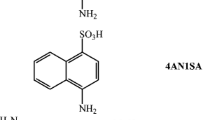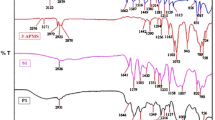Abstract
Polydiethylsiloxane reacts with elemental sulfur at 300–320 °C (ZnCl2 slightly accelerates the process) with evolution of hydrogen sulfide and formation of black lustrous paramagnetic powders (sulfur content up to 38.50%), which possess a noticeable electric conductivity (3.20·10−7 S cm−1 when doped with I2) and redox properties. Polydimethylsiloxanes are stable under the same conditions. In rechargeable lithium batteries, the sulfurized polydiethylsiloxane behaves as an active cathode material allowing charging and discharging of the battery. The specific capacities of the cathodic and anodic processes (80–100 (mA h) g−1) change insignificantly. The hydrolytic stability, elemental analysis, IR and ESR spectra, DSC-TGA and derivatographic analyses data, the electric conductivity, and the character of the electrochemical activity of the polymers synthesized indicate that the polymers contain the polyvinylene disulfide blocks cross-linked by the polysiloxane chain.
Similar content being viewed by others
References
B. Martel, N. Dufaut, and R. Calas,Bull. Soc. Chim. France, 1967,3, 758.
M. N. Bochkarev, L. P. Sanina, and N. S. Vyazankin,Zh. Obshch. Khim., 1969,39, 135 [Russ. J. Gen. Chem., 1969,39 (Engl. Transl.)].
M. Schmidt and H. Schumann,Z. Chem., 1963,325, 1390.
Reaktsii sery s organicheskimi soedineniyami [Reactions of Sulfur with Organic Compounds], Ed. M. G. Voronkov, Nauka SO, Novosibirsk, 1979, 368 pp. (in Russian).
R. Mayer,Z. Chem., 1976,16, 260.
M. G. Voronkov and N. G. Sviridova,Usp. Khim., 1971,40, 1761 [Russ. Chem. Rev., 1971,40 (Engl. Transl.)].
L. M. Sverdlov, M. A. Kovner, and E. P. Krainov,Fizika i tekhnika spektral'nogo analiza. Kolebatel'nye spektry mnogoatomnykh molekul [Physics and Technique of Spectral Analysis. Vibrational Spectra of Polyatomic Molecules], Nauka, Moscow, 1970, 497 (in Russian).
A. J. Gordon and R. A. Ford,The Chemist's Companion. A Handbook of Practical Data, Techniques, and References, J. Wiley and Sons, New York-London-Sydney-Toronto, 1972.
A. I. Lazarev, A. P. Mirgorodskii, and I. S. Ignat'ev,Kolebatel'nye spektry slozhnykh okislov. Silikaty i ikh analogi [Vibrational Spectra of Complex Oxides. Silicates and Their Analogs], Nauka, Leningrad, 1975, 296 pp. (in Russian).
Author information
Authors and Affiliations
Additional information
Translated fromIzvestiya Akademii Nauk. Seriya Khimicheskaya, No. 3, pp. 462–466, March, 1999.
Rights and permissions
About this article
Cite this article
Trofimov, B.A., Skotheim, T.A., Andriyankova, L.V. et al. Sulfurization of polymers. Russ Chem Bull 48, 459–462 (1999). https://doi.org/10.1007/BF02496161
Received:
Issue Date:
DOI: https://doi.org/10.1007/BF02496161




